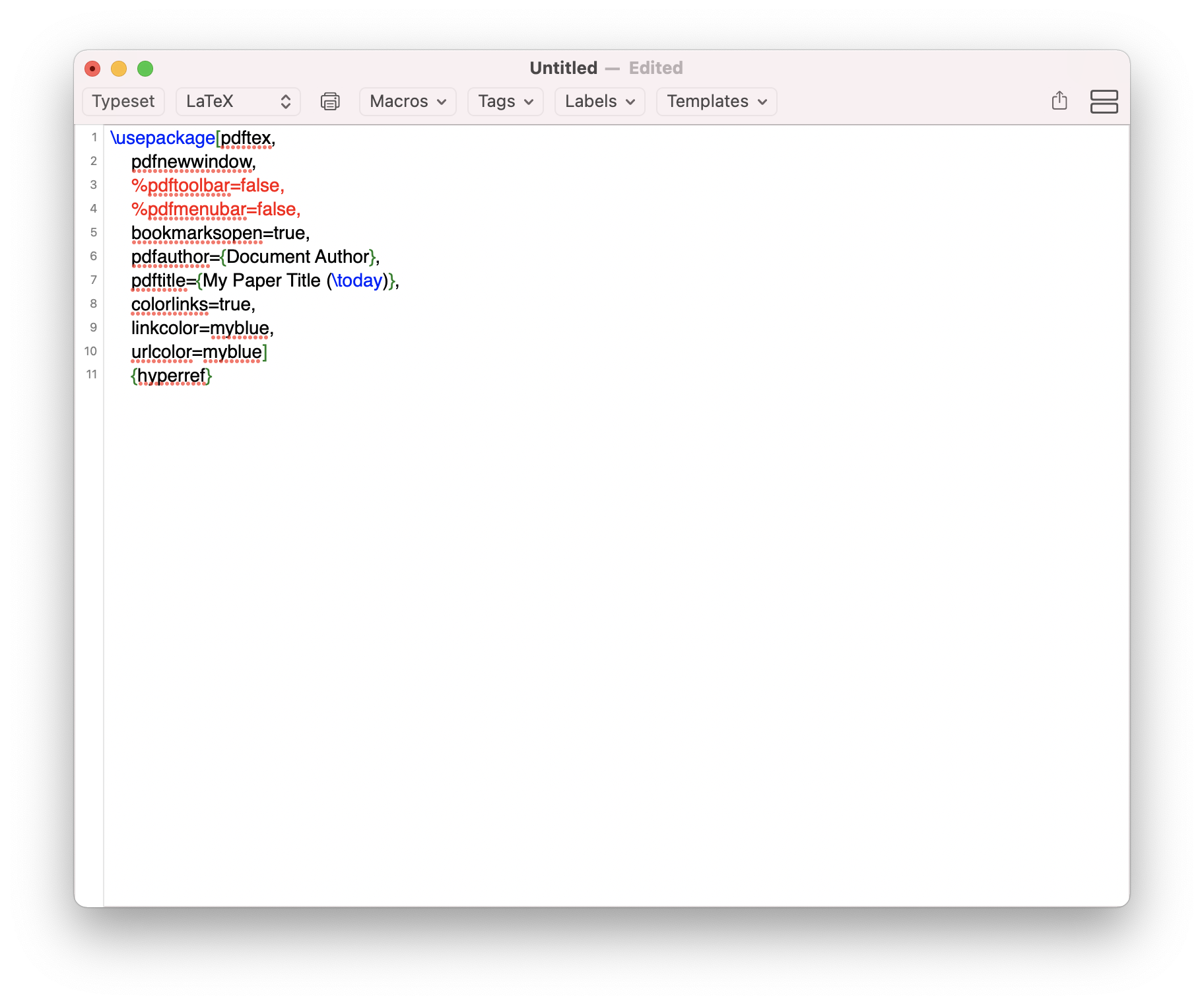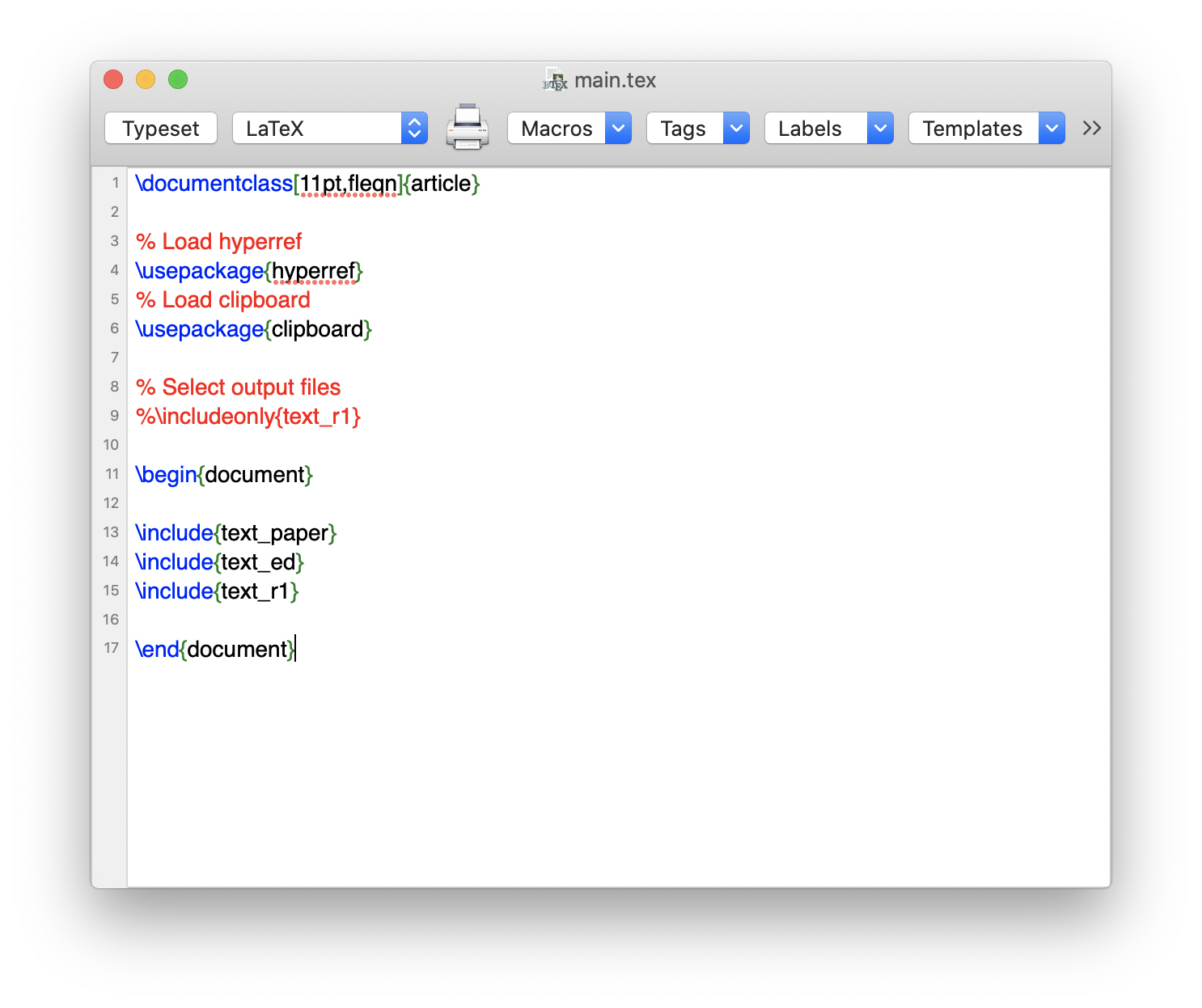Manuscripts typically contain many different types of numbering: page numbering, sections, subsections, figures, tables etc.
Continue reading “Numbering in LaTeX documents”Category: LaTeX
all posts related to latex codes
Economics journals BibTex styles (.bst)
Over and over again we were searching for BibTeX styles files (.bst) that follow the required styles of specific journals. So we decided to create a list ourselves. If you have any additions or corrections, please lets us know!
Continue reading “Economics journals BibTex styles (.bst)”Add date, month or year to your LaTeX document
Including the current date in your LaTeX document is quite straightforward. Simply put \today whereever you want the current timestamp (i.e. the date at the time of compiling the document), and you get the current date:
Continue reading “Add date, month or year to your LaTeX document”Add document properties in PDF using LaTeX
You might have seen that PDF documents have (as many other files as well) their own document properties, such as the document’s author, title, etc. Using LaTeX’s hyperref package, you can very easily define these in the preamble of your .tex-document:
Continue reading “Add document properties in PDF using LaTeX”Handout-mode in LaTeX slides
Whether it is lecture slides or presentations, you often wants to distribute pdf-versions of your beamertex file. If you are using overlay to blockwise show text or blockwise highlighting parts of tables (see here and here for ways to color parts of tables with overlay), it makes little sense to distribute the pdf versions where one and the same slide is repeated with each overlay step. Luckily, there is a extremely simple solution
Continue reading “Handout-mode in LaTeX slides”Produce multiple pdfs in LaTeX with automated cross-references
Create reference between documents (paper, letter to editor etc) with direct quotes.
For some time I looked for a way to simplify the process of linking LaTeX files of my manuscripts with the replies to editors and referees. In particular, I was looking for a way to automatically update cross-references (i.e. to put a \ref in the replies and link it to a \label in the mansuctipt – for example for a table), and also to put direct quotes of the from the main text into a report (e.g. if you want to tell the editor/referee if you have a specific sentence, paragraph or even table added to the revised manuscript).
Continue reading “Produce multiple pdfs in LaTeX with automated cross-references”Three ways to import references into your BiBTeX database
Manually importing references into your BiBTeX database can be tedious (and prone to make errors…). While you can download the BiBTeX code from the journal websites or other sites such as IDEAS, there are three four other useful ways to efficiently update your BiBTeX database
Line spacing in footnotes
When submitting papers, journals often require double-spaced footnotes. While there seem to be different approaches to it, this one worked quite well. It requires the footnotemisc package. You simply need to enter the following code in the preamble of your LaTeX file:
Write strikethrough text in LaTeX
Strikethrough text with LaTeX
Especially when making changes in collaborations, it is quite useful to have strikethrough text, so that collaborators can see the deleted text (which can thereafter be deleted). While there are ways to use track changes for LaTeX (see our earlier post here), strikethrough text is probably easier to implement. For a very simple way of striking through text in LaTeX, you can use the soul package and then use \st{Strike through this text}
Changing font color in table columns
In my ongoing search to further improve table layout for my beamer-presentations, I just came across a simple way to change the font color in tables. This comes in handy, for example, to highlight results regression results in specific tables.
Continue reading “Changing font color in table columns”


